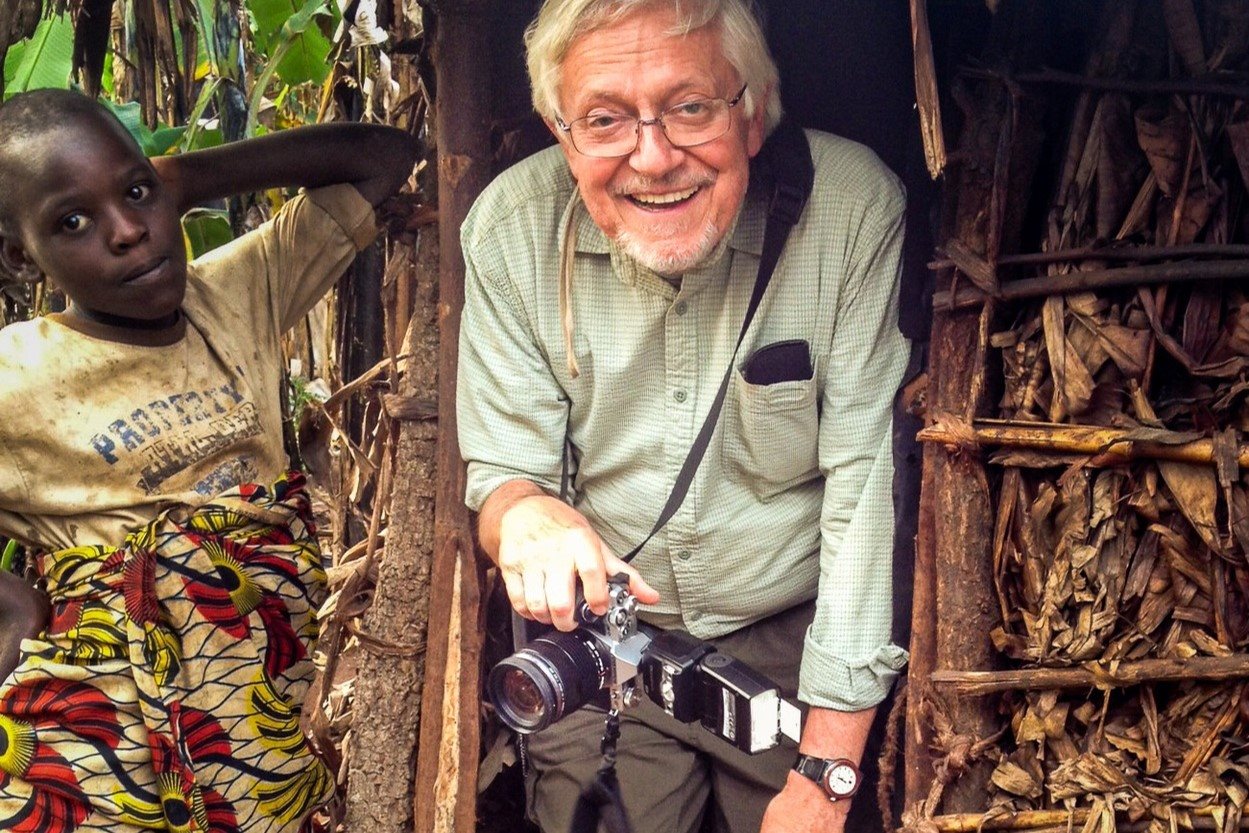
Photography has always been a powerful tool for storytelling and documentation. It has the ability to capture authentic moments, evoke emotions, and drive social change. In recent years, photography has also become a significant catalyst for philanthropy. Through compelling images, photographers have been able to raise awareness about various causes, inspire action, and initiate meaningful conversations.
In this article, we will explore 17 mind-blowing facts about photography for philanthropy. From the incredible impact of photojournalism to the innovative ways photographers are using their skills to make a difference, these facts will shed light on the dynamic intersection between photography and philanthropic efforts. So, grab your camera and get ready to be amazed by the transformative power of photography in the world of philanthropy!
Key Takeaways:
- Photography has the power to tell powerful stories, promote empathy, and drive social change, making it an essential tool for raising awareness and inspiring action for philanthropic causes.
- Photography not only documents history and cultural heritage but also breaks down stereotypes, inspires collaboration, and bridges cultural gaps, showcasing the beauty of the natural world and driving tourism for philanthropic destinations.
Photography can create awareness and drive social change.
With its powerful and emotive nature, photography has the ability to raise awareness about social issues and inspire action for philanthropic causes. From documenting poverty and inequality to capturing the beauty of nature, photography has the potential to make a real impact.
Photographs can tell powerful stories.
A single photograph has the power to convey a story that words may struggle to express. Through composition, lighting, and subject matter, photographers can capture the essence of a situation or a person’s life, creating a connection between the viewer and the subject.
Photography promotes empathy.
By showcasing the lives and experiences of others, photography can foster empathy and understanding. It allows us to see the world through different perspectives, encouraging compassion and a desire to make a positive change.
Photography can amplify voices that would otherwise go unheard.
Photography provides a platform for marginalized communities and individuals to share their stories and experiences. By giving a voice to those who may not have had one, photography can raise awareness and advocate for social justice.
Photography plays a crucial role in fundraising campaigns.
Photographs are often used in fundraising campaigns for philanthropic organizations. Compelling images can evoke emotions and inspire people to donate or get involved in making a difference.
Photography serves as a visual record of history.
Photographs capture moments in time, preserving them for future generations to learn from and reflect upon. They document important events, milestones, and societal changes, creating a visual narrative of our collective history.
Photography can break down stereotypes.
Through thoughtfully captured images, photography has the power to challenge stereotypes and break down prejudices. By showcasing the diversity of humanity, it promotes inclusivity and celebrates the uniqueness of each individual.
Photographs can inspire collaboration among diverse groups.
When different communities and individuals come together to create and appreciate photography, it fosters collaboration and understanding. It allows for the exchange of ideas and perspectives, leading to innovative solutions for social issues.
Photography offers a platform for self-expression.
For aspiring photographers, photography provides a creative outlet to express their ideas, emotions, and beliefs. It enables individuals to share their unique perspective on the world, generating conversations and inspiring change.
Photography stimulates dialogue and conversation.
Powerful photographs can spark conversations and encourage dialogue around important social issues. They act as catalysts for change by bringing attention to topics that require attention and discussion.
Photography can promote cultural preservation.
Photography serves as a means of preserving cultural heritage, traditions, and customs. It allows for the documentation and celebration of diverse cultural practices, ensuring their legacy for future generations.
Photography highlights the beauty of the natural world.
Through capturing breathtaking landscapes, wildlife, and natural wonders, photography promotes an appreciation for the beauty and importance of the natural world. It inspires environmental stewardship and encourages efforts for conservation.
Photography can drive tourism and economic growth for philanthropic destinations.
Compelling images of philanthropic destinations can attract tourists, contributing to the local economy and supporting community development efforts. Photography plays a significant role in showcasing the unique features and experiences that these destinations offer.
Photography encourages creativity and imagination.
Both behind the camera and as viewers, photography stimulates creativity and imagination. It encourages individuals to explore new perspectives, experiment with different techniques, and think outside the box.
Photography can document progress and achievements in philanthropic projects.
Photographs act as a visual representation of the progress made in philanthropic projects. They capture the impact and positive changes brought about by these initiatives, inspiring others to get involved and continue making a difference.
Photography inspires advocacy and activism.
Through visually compelling images, photography has the power to ignite advocacy and activism for philanthropic causes. It can mobilize individuals to stand up for what they believe in and work towards creating a more just and equitable world.
Photography bridges the gap between different cultures and communities.
Photography has the ability to transcend language barriers and cultural differences, creating connections and fostering understanding between diverse communities. It reminds us of our shared humanity and encourages collaboration on a global scale.
Conclusion
Photography for philanthropy is a powerful tool that combines the art of capturing images with the purpose of making a positive impact on the world. The 17 mind-blowing facts highlighted in this article highlight the incredible potential that photography has to drive change, raise awareness, and inspire action.
Whether it’s showcasing the work of charitable organizations, documenting the stories of marginalized communities, or capturing the beauty of nature to advocate for conservation, photography serves as a catalyst for social change.
From the power of visual storytelling to the ability to evoke emotions, photography has the unique ability to transcend language and cultural barriers, fostering empathy and understanding. It is through the lens of a camera that we can truly connect with the world and make a difference.
So, whether you’re a professional photographer looking to use your skills for a cause or an individual who wants to support philanthropic efforts, remember the impact that photography can have. Your images have the potential to inspire, inform, and ignite change. Together, we can harness the power of photography for philanthropy and create a better world.
FAQs
1. How can photography be used for philanthropy?
Photography can be used for philanthropy by documenting the work of charitable organizations, capturing the stories of those in need, and raising awareness about social issues through powerful imagery.
2. Can photography help raise funds for philanthropic causes?
Absolutely! Photography can be a powerful tool to engage donors and supporters. High-quality images that tell a compelling story can inspire people to contribute financially to philanthropic causes.
3. What skills do I need to use photography for philanthropy?
While technical photography skills are important, what matters most is the ability to capture the essence of a cause and convey emotion through your images. A strong sense of empathy and the desire to create positive change are also crucial.
4. Can I use my smartphone for philanthropic photography?
Absolutely! With the advancements in smartphone technology, you can capture impactful images using just your phone. The key is to focus on composition, storytelling, and capturing authentic moments.
5. How can I get involved with photography for philanthropy?
There are many ways to get involved. You can volunteer your photography skills to document the work of charitable organizations, participate in photography contests and exhibitions that support philanthropic causes, or even start your own photography project to raise awareness and funds.
6. Is it necessary to have a professional camera for philanthropic photography?
While a professional camera can offer more control and flexibility, it is not a requirement. The most important aspect of philanthropic photography is the ability to capture meaningful moments and tell powerful stories, regardless of the equipment used.
Was this page helpful?
Our commitment to delivering trustworthy and engaging content is at the heart of what we do. Each fact on our site is contributed by real users like you, bringing a wealth of diverse insights and information. To ensure the highest standards of accuracy and reliability, our dedicated editors meticulously review each submission. This process guarantees that the facts we share are not only fascinating but also credible. Trust in our commitment to quality and authenticity as you explore and learn with us.


